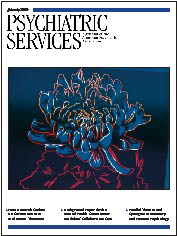The Clinical Profile and Service Needs of Hospitalized Adults With Mental Retardation and a Psychiatric Diagnosis
Abstract
OBJECTIVE: This study compared patients with both mental retardation and a psychiatric diagnosis with patients who did not have co-occurring mental retardation who were served in Ontario's tertiary mental health care system in terms of demographic characteristics, symptom profile, strengths and resources, and clinical service needs. METHODS: A secondary analysis of data from the Colorado Client Assessment Record (CCAR) that were collected between 1999 and 2003 from all tertiary psychiatric hospitals in Ontario, Canada, was completed for a random sample of 3,927 cases, representing 12,470 patients receiving psychiatric services. RESULTS: Patients with both mental retardation and a psychiatric diagnosis differed from those who did not have mental retardation in terms of demographic characteristics, diagnostic and symptom profile, resources, and recommended level of care. More specifically, patients with both mental retardation and a psychiatric diagnosis had significantly worse ratings across nearly all CCAR functional domains and were assessed as requiring more than the recommended levels of care compared with other patients. CONCLUSIONS: Patients who have both mental retardation and a psychiatric diagnosis constitute a sizeable subgroup of an already underserved psychiatric hospital population. Greater attention is required to meet the unique clinical and service needs of this challenging group.



